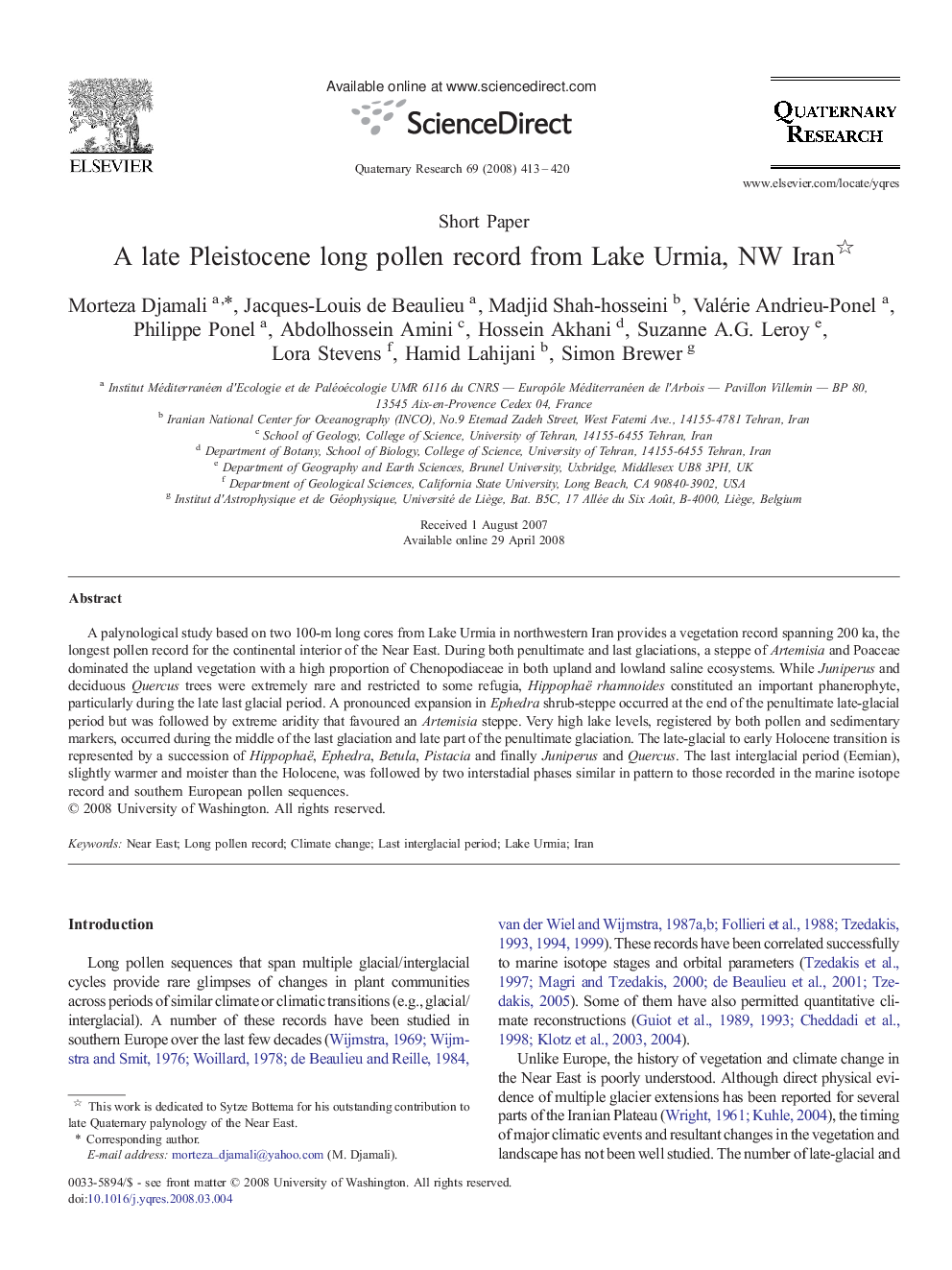| Article ID | Journal | Published Year | Pages | File Type |
|---|---|---|---|---|
| 1045780 | Quaternary Research | 2008 | 8 Pages |
A palynological study based on two 100-m long cores from Lake Urmia in northwestern Iran provides a vegetation record spanning 200 ka, the longest pollen record for the continental interior of the Near East. During both penultimate and last glaciations, a steppe of Artemisia and Poaceae dominated the upland vegetation with a high proportion of Chenopodiaceae in both upland and lowland saline ecosystems. While Juniperus and deciduous Quercus trees were extremely rare and restricted to some refugia, Hippophaë rhamnoides constituted an important phanerophyte, particularly during the late last glacial period. A pronounced expansion in Ephedra shrub-steppe occurred at the end of the penultimate late-glacial period but was followed by extreme aridity that favoured an Artemisia steppe. Very high lake levels, registered by both pollen and sedimentary markers, occurred during the middle of the last glaciation and late part of the penultimate glaciation. The late-glacial to early Holocene transition is represented by a succession of Hippophaë, Ephedra, Betula, Pistacia and finally Juniperus and Quercus. The last interglacial period (Eemian), slightly warmer and moister than the Holocene, was followed by two interstadial phases similar in pattern to those recorded in the marine isotope record and southern European pollen sequences.
